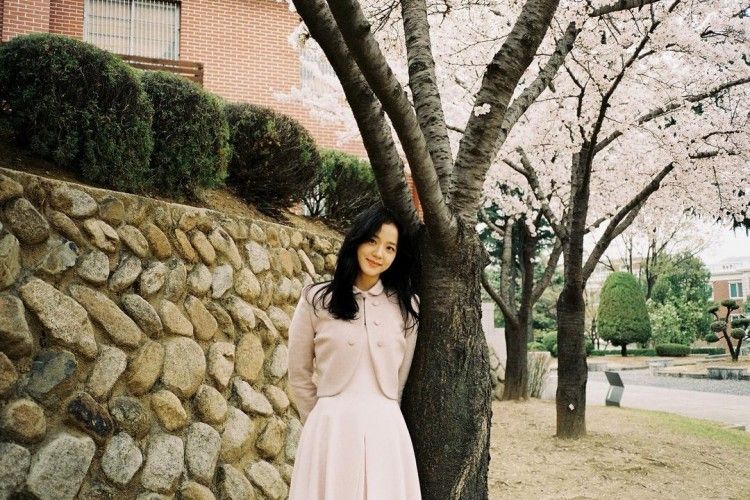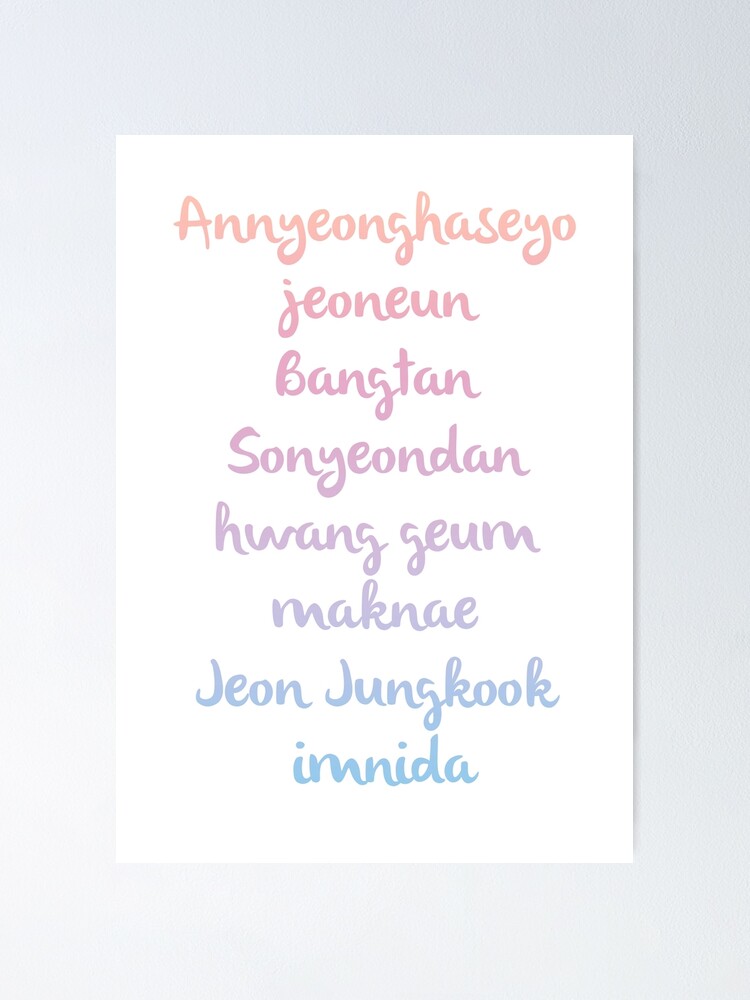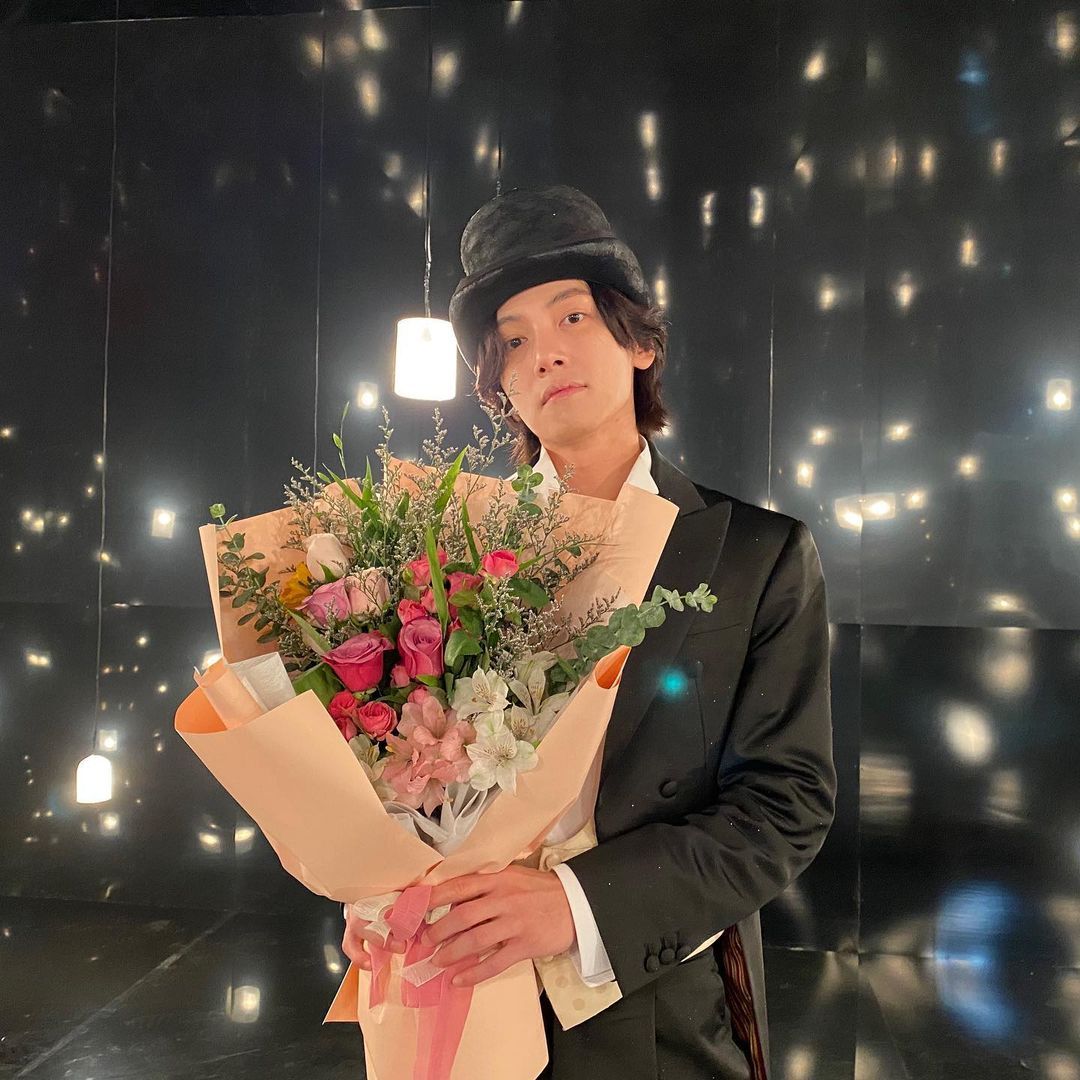**Je eereumeun *insert name* imnida** Easy Korean Words, Korean Words Learning, Korean Phrases

Annyeonghaseyo Imnida Artinya Anyong Pataga
About Press Copyright Contact us Creators Advertise Developers Terms Privacy Policy & Safety How YouTube works Test new features NFL Sunday Ticket Press Copyright.
jbZ6mGtTUsAW8UNCrpIQ9a9EGhvGe1NXQPBuxS1Rm6vS9A0DldY4nSxCBgTr06v2p9o6gXHadQ=s900ckc0x00ffffff
Arti Kata imnida Korean First - Kali ini kita akan belajar arti dan penggunaan tata bahasa 입니다 (imnida). Simak pelajarannya berikut sampai selesai. Kata imnida (입니다) ini sering kita temui di dalam percakapan sehari-hari, baik di dunia kerja, acara reality show, atau acara lainnya. Jadi kita perlu sekali untuk mengetahui arti dan cara penggunaannya dalam sebuah kalimat.

How To Introduce Yourself in Korean in 1 Minute Korean phrases, Learn korean, Learn to speak
Re: imnida, imnika, yeyo/iyeyo. 'Yeyo' and 'Ipnida' both come at the end of the sentence. 'Yeyo' is more informal and usually a spoken expression, 'Ipnida' is more formal. Both are usually used after a noun. 먹다 (mok-da) is a verb, however, so you would write it as 먹어요 (informal) and 먹습니다 (formal).

Arti Imnida dan Contoh Penggunaannya Belajar Bahasa Korea
1. Arti imnida. Kata imnida (입니다) memiliki arti 'adalah'. Dalam penggunaannya, kata ini diletakkan di akhir kalimat. Kata ini biasa digunakan untuk memperkenalkan diri kepada orang lain. Sebagai contoh: 저는 민호입니다. Jeoneun Minho imnida. artinya, "Saya adalah Min ho".
AGIKgqP34oC7B4aAoKE1FWYcgnFv6ILCH8D9GUBhMae=s900ckc0x00ffffffnorj
1. 아니에요 (anieyo) The most common response to "thank you" in Korean is 아니에요 (anieyo). This is the word that you will hear the most often. Therefore, if you want to learn one way to say "you're welcome" in Korean, then learn this expression! When saying 아니에요 (anieyo), it is important to get your voice tone correct.

Annyeonghaseyo Imnida Artinya Anyong Pataga
1. "Imnida" As A Polite Ending. In Korean, "imnida" is commonly used as a polite ending to verbs and adjectives. It is equivalent to the English phrases "to be" or "is/are.". By adding "imnida" to the end of a sentence, you convey respect and formalize your speech.

Arti Imnida dan Contoh Penggunaannya
Kata imnida digunakan dalam 3 situasi, yaitu ketika memperkenalkan nama diri, menyatakan umur, dan menyebutkan asal negara. Berikut penjelasan lengkapnya: (1) Memperkenalkan Nama Diri. Seperti yang sudah dijelaskan di awal, imnida memiliki arti "adalah", yang mana digunakan sebagai cara formal memperkenalkan diri dalam bahasa Korea.

Expat imnida
Hello, my name is John. Nice to meet you! As you can tell, "Annyeonghaseyo" means "Hello," then "Jeoneun (name)-imnida" means "my name is (name)", and finally "Cheoeum boepgesseumnida" is "Nice to meet you. Do you want to hear how this is pronounced? Then you should also listen and hear real Korean. Press play below.
AMLnZu8QojP6AFvuqxGrn2IK98qsFSsmvJbsvroLJYKfDg=s900ckc0x00ffffffnorj
Click here to get our FREE App & more free lessons at KoreanClass101: https://www.KoreanClass101.com/videoIn this lesson, you'll learn Why Does Ipnida Sound.

Arti Imnida dan Contoh Penggunaannya Belajar Bahasa Korea
Arti Kata imnida. Korean First - Kali ini kita akan belajar arti dan penggunaan tata bahasa 입니다 (imnida). Simak pelajarannya berikut sampai selesai. Kata imnida (입니다) ini sering kita temui di dalam percakapan sehari-hari, baik di dunia kerja, acara reality show, atau acara lainnya. Jadi kita perlu sekali untuk mengetahui arti dan.

Arti Lambang Pancasila Direktorat Sekolah Dasar
Imnida is derived from the verb "ida," which means "to be.". It is used to indicate existence, identity, or status. In Korean grammar, there are several forms of the verb "to be," and Imnida is the most formal and polite form. It is commonly used in business settings, formal occasions, and when speaking with people who are older or.

KOREAN GRAMMAR IN FILIPINO 20Jihae imnida YouTube
한국언니 Korean Unnie ⓒ makes learning Korean fun & easy for Korean learners! 안녕하세요 외국인을 위한 한국어 선생님 한국언니입니다 ㅎㅎSubscribe https://goo.gl.

**Je eereumeun *insert name* imnida** Easy Korean Words, Korean Words Learning, Korean Phrases
Kata 입니다 ( imnida) berasal dari kata 이다 ( ida ). Menurut kamus Naver, kata ini merupakan sebuah akhiran untuk menandai kata benda, sehingga bisa diartikan sebagai "adalah" atau tidak diartikan sama sekali. Contoh paling mudah penggunaan " imnida " adalah saat memperkenalkan nama diri, misalnya: 안녕하세요 슬기 입니다.

Arti Imnida dan Contoh Penggunaannya Belajar Bahasa Korea
Basic Korean grammar on the other hand, uses the order: SUBJECT (S) + OBJECT (O) + VERB (V). For native speakers of languages that use the SVO structure, such as English, this may sound confusing and incorrect. Korean, Japanese, and to some extent German, all use SVO in their grammar. You'll understand why this makes sense when forming a.

Chikin Imnida Annyeong, chingu! We are thrilled to...
보고 싶다 - How to Say I Miss You in Korean. So let's take a look at how to say I miss you in Korean. The most common way is to say bogoshipo (보고 싶어) and if you want to make it more polite you can say bogoshipoyo (보고 싶어요) . But how would I know when to use one or the other?

श्री शिव जी की आरती Aarti of Shri Shiv ji./indiagramnews
Kata 입니까 (imnika) adalah bentuk tanya dari kata 입니다 (imnida) yang digunakan pada kalimat tanya. Sama seperti 입니다 (imnida), kata 입니까 (imnikka) digunakan pada situasi formal untuk memberi kesan hormat kepada lawan bicara. Kata 입니까 juga bisa diartikan dengan "apakah" yang fungsinya untuk bertanya.